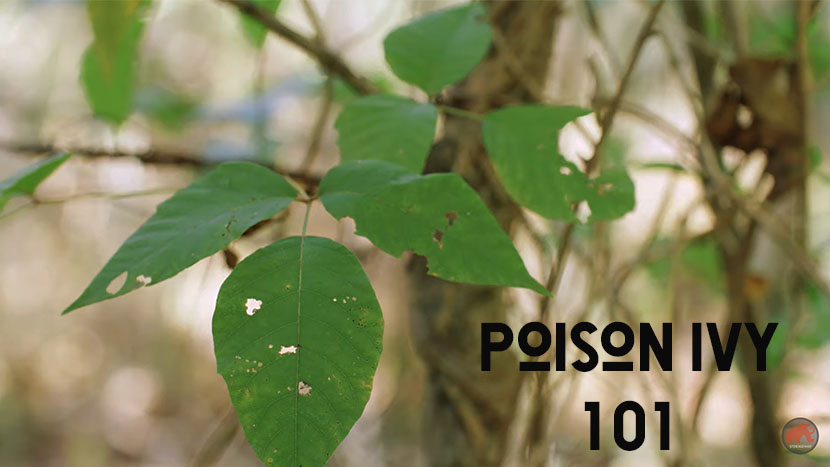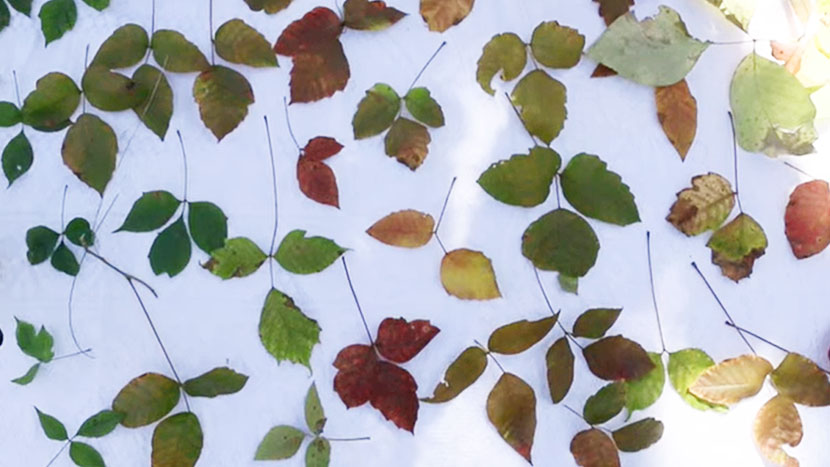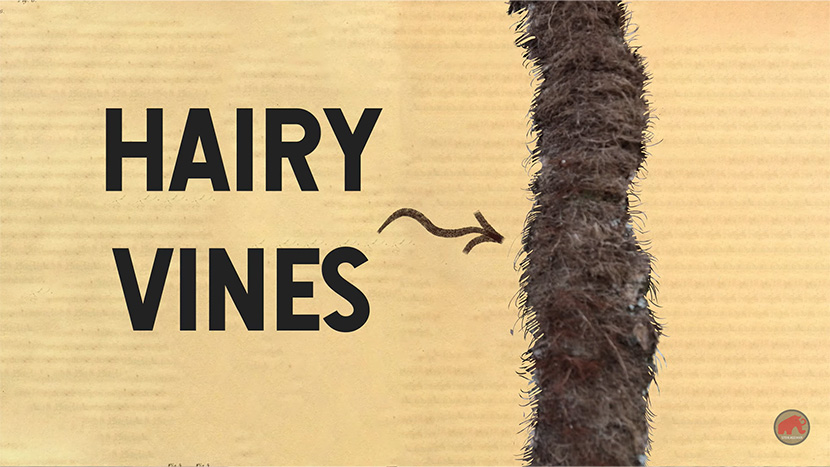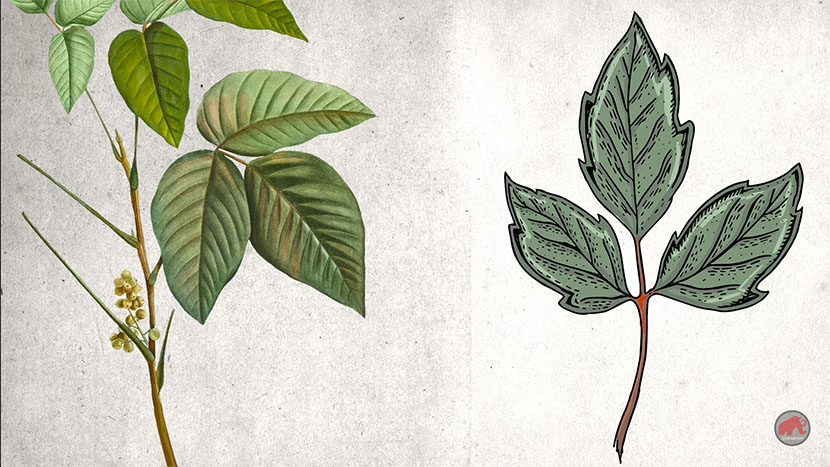Poison Ivy 101
It has happened to many of us. You are minding your own business enjoying a beautiful day out in the woods, when all of a sudden part of your hand, arm, or maybe your ankle starts feeling odd… then itching… then it becomes uncomfortable… and then even starts to hurt. You stop to look at your skin and figure out what is going on, and you notice a bright red rash spreading over its surface. At first you are shocked and confused. What even happened? Then you realize the likely culprit, though you aren’t even sure when you touched it, is poison ivy.
Poison ivy is a common plant throughout the United States, Eastern Canada, and even Mexico and Central America, that results in a hug number of uncomfortable rashes every year, thousands of them even becoming complicated and requiring medical attention. So, if you enjoy spending time outdoors in these areas, it is important to learn all about poison ivy, and how you can best avoid getting a rash from it!

What is poison ivy?
Poison ivy’s scientific name is Toxicodendron radicans and it belongs to the family Anacardiaceae. This family also contains poison oak and poison sumac, and possibly more surprisingly, mangos and cashews.
This plant can grow in a shrub-like manner or be a climbing vine, and its leaves have a range of shapes and colors. Interestingly, poison ivy in the Americas used to be classified into 30 or 40 different species based on its morphology – aka based on its shape, color, and the overall way it looks – which shows you just how tricky it can be to identify!
How to identify poison ivy
Poison ivy can be a bit tricky to identify for a couple reasons:
- It can come in various colors
- The size of the leaves vary
- The edges of the leaves varies (from rounded to serrated)
- There are a few look alike plants, like kudzu and blackberry
Though this variation can be noted in different regions as expected, leaves can even have different shapes, colors, and sizes on the same plant! So it is important to be careful while you identify it, and follow some of the guidelines below.

Here are the basic rules for identifying poison ivy:
Poison ivy leaves can range from bright green to yellowish, red or even brown, but they always have three small leaves, or leaflets, that branch out from one point. This point where the three leaflets meet tends to be reddish in color.
The center leaflet will have a longer small stem, or petiole, and the other two are often pointing in opposite directions from one another. The flowers are numerous but small and form in large clusters, the fruits range from green to white, are small and circular, and often tightly clustered together.
One of the best indicators for poison Ivy ID is that the vines are really hairy! It is important to note that these vines will also stay hairy in winter, and can still give you a rash! So, make sure you watch out for them in any season.
Some quick-to-remember rules for identifying poison ivy are:
Leaves of three? let them be!
Hairy vine? No friend of mine
When in doubt, it is better to avoid touching a plant you might suspect to be poison ivy without proper gloves to avoid a nasty allergic reaction.

Why does poison ivy cause a rash?
Around 50 million people a year are affected by a poison ivy rash. These are often minor, however, many people can develop a really awful reaction, and there are even deaths reported in young children.
So, why does poison ivy cause such a terrible rash? Well, in terms of the plant, it is a defence mechanism to make sure that it isn’t eaten and/or picked, trampled, over, and well, just to be avoided all together. As for why the rash happens, this is due to a compound called Urushiol.
Believe it or not, urushiol itself isn’t technically a dangerous compound, but it can cause a very serious and dangerous allergic reaction, called contact dermatitis. Though that might sound a bit odd, this is what we mean:
How Urushiol works
There are compounds like venom from snakes or spiders that can actually damage your cells, urushiol on the other hand simply penetrates the skin, binds to your skin proteins, and your body is alerted that there is something foreign and bad there, so it attacks it.
Long story short, Langerhans cells in your body take up the urushiol and a compound called CD1A signals that the body is under threat, T cells then come in and attack, causing the itchiness and swelling. This will kill the urushiol, but also kill other cells. This is what causes the redness, swelling, and other unpleasant symptoms.
Since this is an allergic reaction, everyone reacts a lot differently and in a different amount of time. Also, around 15% of people just won’t be affected. Additionally, since T cells have a memory, the more you are exposed to urushiol, the more likely you are to react more quickly. On that note, it is really important to know that there is some misinformation out there about building immunity to poison ivy. For example:
Myth: Eating poison ivy will help you build an immunity to it.
Verdict: False!
Not only will eating poison ivy not help you build an immunity to it, it could just give you nasty mouth rashes, or give you a rash as the poison ivy leaves your body, ouch!

Treatment of a urushiol reaction
So, if you have accidentally come into contact with poison ivy, what should you do?
If you have recently had contact with it you will need to wash the area with dishwashing soap or other products that are good for removing oils and resins. Just water doesn’t work because urushiol is a resin. As a natural remedy in a pinch, jewelweed can help get the oils off of you and prevent a reaction!
Now, if you have a reaction already and it is quite bad or seems to be getting worse, do not hesitate to see a doctor and/or dermatologist. Though we are all about getting back to nature and using natural remedies when you can, a dermatologist will be able to prescribe you steroids to help your body heal the affected area more quickly.
Final thoughts on poison ivy and getting outside
Poison ivy can be a bit hard to identify but with practice anyone can get better. Just remember the trick: leaves of three, let it be, hairy vine no friend of mine! And if you are doing garden work, it is best to wear some good gloves to avoid grabbing some by mistake. Last, when you think you have had contact with poison ivy, do what you can to get the urushiol resins off as fast as possible.
And most importantly, we want to conclude with this:
Though the outdoors is filled with things like poison ivy, you shouldn’t be discouraged from going out and enjoying nature. Instead, you just need to spend more time learning about your environment and how best to interact with it!
For more on poison ivy identification, treatment, and what you SHOULDN’T do with poison ivy, check out our video here!
































































































